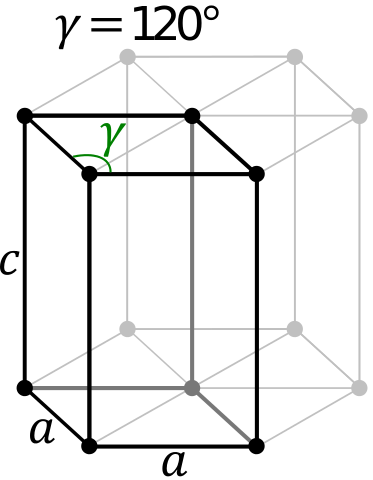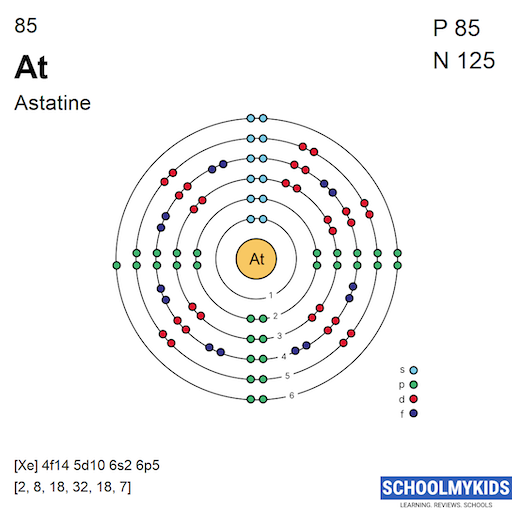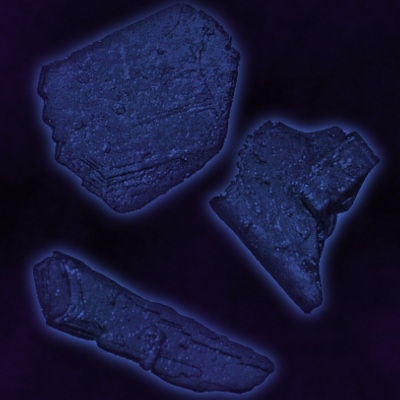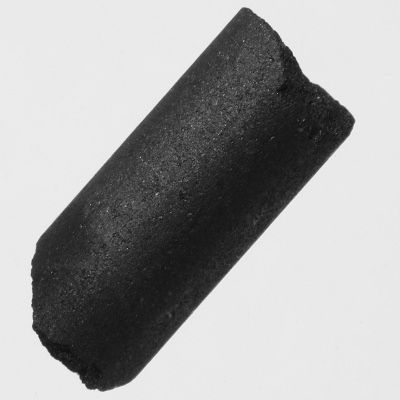Periodic Table Element Comparison: Compare Elements - Astatine vs Carbon
Compare Astatine and Carbon
Compare Astatine and Carbon on the basis of their properties, attributes and periodic table facts. Compare elements on more than 90 properties. All the elements of similar categories show a lot of similarities and differences in their chemical, atomic, physical properties and uses. These similarities and dissimilarities should be known while we study periodic table elements. You can study the detailed comparison between Astatine vs Carbon with most reliable information about their properties, attributes, facts, uses etc. You can compare At vs C on more than 90 properties like electronegativity , oxidation state, atomic shells, orbital structure, Electronaffinity, physical states, electrical conductivity and many more.
Facts
| Name | Astatine | Carbon |
| Atomic Number | 85 | 6 |
| Atomic Symbol | At | C |
| Atomic Weight | 210 | 12.0107 |
| Phase at STP | Solid | Solid |
| Color | Silver | Black |
| Metallic Classification | Halogens | Other Nonmetal |
| Group in Periodic Table | group 17 | group 14 |
| Group Name | fluorine family | carbon family |
| Period in Periodic Table | period 6 | period 2 |
| Block in Periodic Table | p -block | p -block |
| Electronic Configuration | [Xe] 4f14 5d10 6s2 6p5 | [He] 2s2 2p2 |
| Electronic Shell Structure (Electrons per shell) | 2, 8, 18, 32, 18, 7 | 2, 4 |
| Melting Point | 575 K | 3823 K |
| Boiling Point | - | 4300 K |
| CAS Number | CAS7440-68-8 | CAS7440-44-0 |
| Neighborhood Elements | Neighborhood Elements of Astatine | Neighborhood Elements of Carbon |
History
| Name | Astatine | Carbon |
| History | The element Astatine was discovered by R. Corson,R. MacKenzie and E. Segrè in year 1940 in United States. Astatine derived its name from the Greek astatos, 'unstable'. | The element Carbon was discovered by Egyptians and Sumerians in year 3750 BCE. Carbon derived its name the Latin word carbo, meaning 'coal'. |
| Discovery | R. Corson,R. MacKenzie and E. Segrè (1940) | Egyptians and Sumerians (3750 BCE) |
| Isolated | () | () |
Presence: Abundance in Nature and Around Us
Parts per billion (ppb) by weight / by atoms (1ppb =10^-7 %)
| Name | Astatine | Carbon |
| Abundance in Universe | - / - | 5000000 / 500000 |
| Abundance in Sun | - / - | 3000000 / 300000 |
| Abundance in Meteorites | - / - | 15000000 / 18000000 |
| Abundance in Earth's Crust | - / - | 1800000 / 3100000 |
| Abundance in Oceans | - / - | 28000 / 14400 |
| Abundance in Humans | - / - | 230000000 / 120000000 |
Crystal Structure and Atomic Structure
| Name | Astatine | Carbon |
| Atomic Volume | - | 5.29 cm3/mol |
| Atomic Radius | 127 pm | 67 pm |
| Covalent Radius | - | 77 pm |
| Van der Waals Radius | 202 pm | 170 pm |
| Atomic Spectrum - Spectral Lines | ||
| Emission Spectrum | Not available |  |
| Absorption Spectrum | Not available |  |
| Lattice Constant | - | 246.4, 246.4, 671.1 pm |
| Lattice Angle | - | π/2, π/2, 2 π/3 |
| Space Group Name | - | P63/mmc |
| Space Group Number | - | 194 |
| Crystal Structure | Face Centered Cubic  | Simple Hexagonal  |
Atomic and Orbital Properties
| Name | Astatine | Carbon |
| Atomic Number | 85 | 6 |
| Number of Electrons (with no charge) | 85 | 6 |
| Number of Protons | 85 | 6 |
| Mass Number | 210 | 12.0107 |
| Number of Neutrons | 125 | 6 |
| Shell structure (Electrons per energy level) | 2, 8, 18, 32, 18, 7 | 2, 4 |
| Electron Configuration | [Xe] 4f14 5d10 6s2 6p5 | [He] 2s2 2p2 |
| Valence Electrons | 6s2 6p5 | 2s2 2p2 |
| Oxidation State | -1, 1 | -4, -3, -2, -1, 0, 1, 2, 3, 4 |
| Atomic Term Symbol (Quantum Numbers) | 2P3/2 | 3P0 |
| Shell structure |  |  |
Isotopes and Nuclear Properties
Astatine has 0 stable naturally occuring isotopes while Carbon has 2 stable naturally occuring isotopes.
| Name | Astatine | Carbon |
| Known Isotopes | 193At, 194At, 195At, 196At, 197At, 198At, 199At, 200At, 201At, 202At, 203At, 204At, 205At, 206At, 207At, 208At, 209At, 210At, 211At, 212At, 213At, 214At, 215At, 216At, 217At, 218At, 219At, 220At, 221At, 222At, 223At | 8C, 9C, 10C, 11C, 12C, 13C, 14C, 15C, 16C, 17C, 18C, 19C, 20C, 21C, 22C |
| Stable Isotopes | - | Naturally occurring stable isotopes: 12C, 13C |
| Neutron Cross Section | - | 0.0035 |
| Neutron Mass Absorption | - | 0.000015 |
Chemical Properties: Ionization Energies and electron affinity
| Name | Astatine | Carbon |
| Valence or Valency | 7 | 4 |
| Electronegativity | 2.2 Pauling Scale | 2.55 Pauling Scale |
| Electron Affinity | 270.1 kJ/mol | 153.9 kJ/mol |
| Ionization Energies | 1st: 899.003 kJ/mol | 1st: 1086.5 kJ/mol 2nd: 2352.6 kJ/mol 3rd: 4620.5 kJ/mol 4th: 6222.7 kJ/mol 5th: 37831 kJ/mol 6th: 47277 kJ/mol |
Physical Properties
| Name | Astatine | Carbon |
| Density | - | 2.26 g/cm3 |
| Molar Volume | - | 5.29 cm3/mol |
Elastic Properties | ||
| Young Modulus | - | - |
| Shear Modulus | - | - |
| Bulk Modulus | - | 33 GPa |
| Poisson Ratio | - | - |
Hardness - Tests to Measure of Hardness of Element | ||
| Mohs Hardness | - | 0.5 MPa |
| Vickers Hardness | - | - |
| Brinell Hardness | - | - |
Electrical Properties | ||
| Electrical Conductivity | - | 100000 S/m |
| Resistivity | - | 0.00001 m Ω |
| Superconducting Point | - | - |
Heat and Conduction Properties | ||
| Thermal Conductivity | 2 W/(m K) | 140 W/(m K) |
| Thermal Expansion | - | 0.0000071 /K |
Magnetic Properties | ||
| Magnetic Type | - | Diamagnetic |
| Curie Point | - | - |
| Mass Magnetic Susceptibility | - | -6.2e-9 m3/kg |
| Molar Magnetic Susceptibility | - | -7.45e-11 m3/mol |
| Volume Magnetic Susceptibility | - | -0.000014 |
Optical Properties | ||
| Refractive Index | - | 2.417 |
Acoustic Properties | ||
| Speed of Sound | - | 18350 m/s |
Thermal Properties - Enthalpies and thermodynamics
| Name | Astatine | Carbon |
| Melting Point | 575 K | 3823 K |
| Boiling Point | - | 4300 K |
| Critical Temperature | - | - |
| Superconducting Point | - | - |
Enthalpies | ||
| Heat of Fusion | 6 kJ/mol | 105 kJ/mol |
| Heat of Vaporization | 40 kJ/mol | 715 kJ/mol |
| Heat of Combustion | - | -393.5 J/(kg K) |
Regulatory and Health - Health and Safety Parameters and Guidelines
| Name | Astatine | Carbon |
| CAS Number | CAS7440-68-8 | CAS7440-44-0 |
| RTECS Number | - | {RTECSHL4158550, RTECSFF5250100, RTECSMD9659600, N/A} |
| DOT Hazard Class | - | 4.2 |
| DOT Numbers | - | 1361 |
| EU Number | - | - |
| NFPA Fire Rating | - | 1 |
| NFPA Health Rating | - | 0 |
| NFPA Reactivity Rating | - | 0 |
| NFPA Hazards | - | - |
| AutoIgnition Point | - | - |
| Flashpoint | - | - |
Compare With Other Elements
Compare Astatine with all Group 17 elementsCompare Astatine with all Period 6 elementsAstatine vs PraseodymiumAstatine vs CesiumAstatine vs BariumAstatine vs LanthanumAstatine vs CeriumAstatine vs NeodymiumAstatine vs PromethiumAstatine vs SamariumAstatine vs EuropiumAstatine vs GadoliniumAstatine vs TerbiumAstatine vs DysprosiumAstatine vs HolmiumAstatine vs ErbiumAstatine vs ThuliumAstatine vs YtterbiumAstatine vs LutetiumAstatine vs HafniumAstatine vs TantalumAstatine vs TungstenAstatine vs RheniumAstatine vs OsmiumAstatine vs IridiumAstatine vs PlatinumAstatine vs GoldAstatine vs MercuryAstatine vs ThalliumAstatine vs LeadAstatine vs BismuthAstatine vs PoloniumAstatine vs Radon Compare Astatine with all Halogens elements | Compare Carbon with all Group 14 elementsCompare Carbon with all Period 2 elementsCarbon vs LithiumCarbon vs BerylliumCarbon vs BoronCarbon vs NitrogenCarbon vs OxygenCarbon vs FluorineCarbon vs Neon Compare Carbon with all Other Nonmetal elements |


